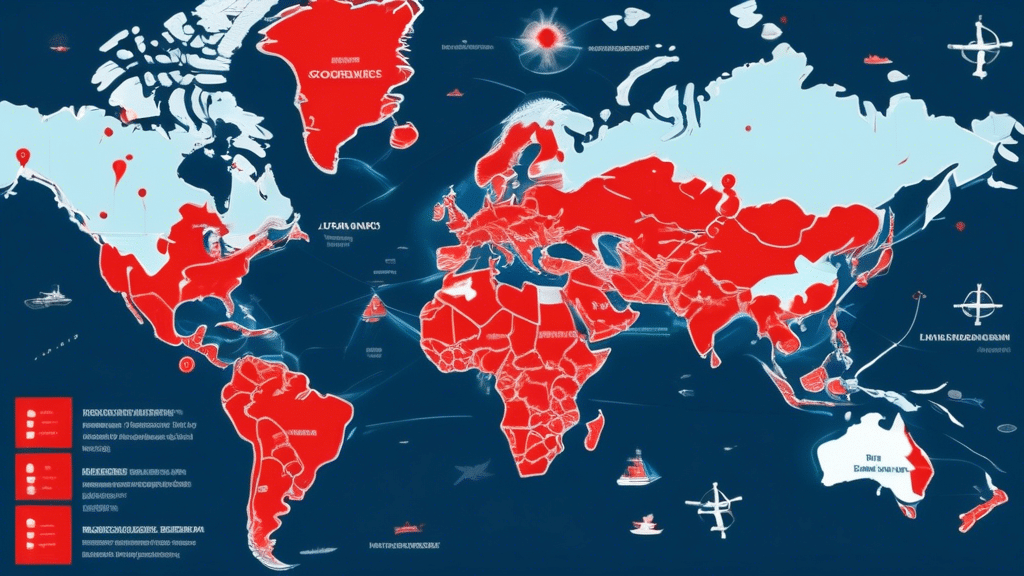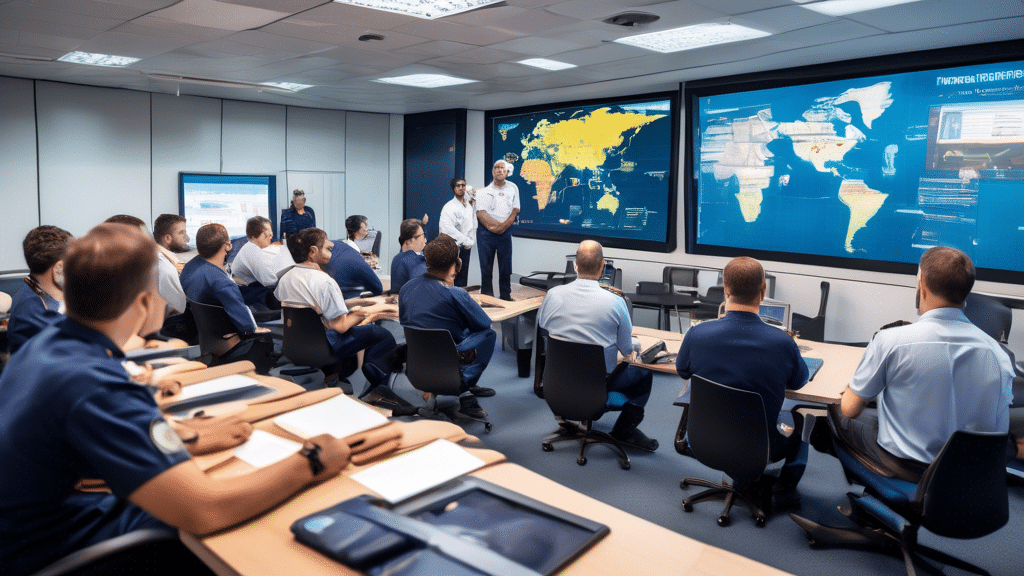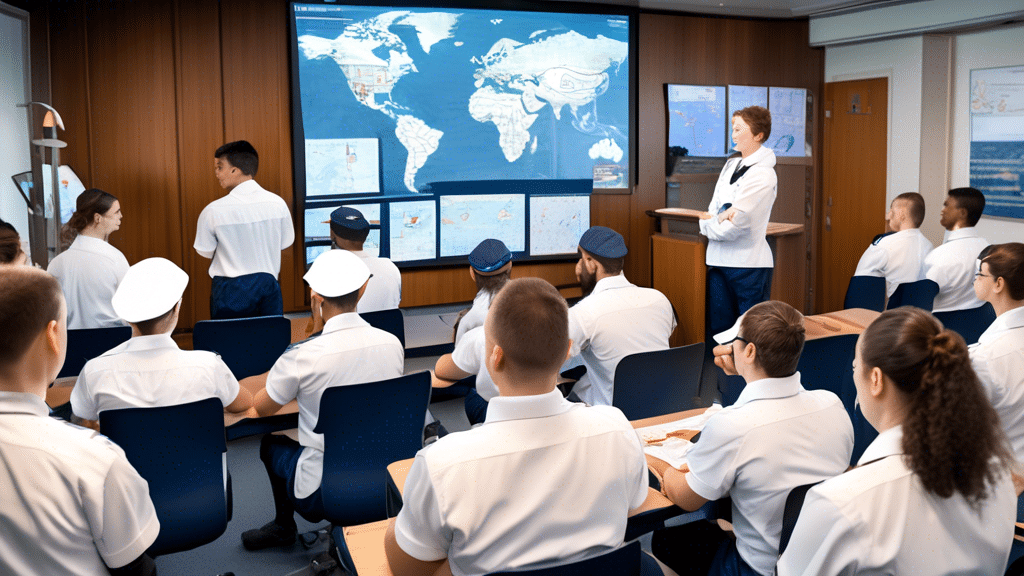The high seas have always been a realm of adventure and mystery, but in recent years, they have also become increasingly fraught with danger. Maritime piracy, once relegated to the annals of history, has resurfaced as a significant threat to global shipping routes and international commerce. While state-of-the-art technology and vigilant coastal patrols have curbed the menace to some extent, the geographical enormity of the oceans coupled with economic disparities and political instability have allowed piracy to fester in various hotspots around the world. Recognizing these high-risk areas is crucial for maritime security, international trade, and safeguarding lives.
Understanding the current trends in maritime piracy reveals a pattern of concentrated activity in certain strategic locations. These hotspots are typically characterized by heavy maritime traffic, geopolitical instability, and limited naval presence, making them prime targets for pirate attacks. Identifying these perilous waters not only helps in deploying effective counter-piracy measures but also aids merchant vessels in planning safer routes, thereby minimizing risk and ensuring smoother global trade operations.
In this article, Global Hotspots: 10 Areas Most Affected by Maritime Piracy, we delve deep into the regions that have become synonymous with modern maritime piracy. From the notorious Gulf of Aden and the critical choke point of the Strait of Malacca to the turbulent waters off the West Coast of Africa and the pirate-infested South China Sea, each hotspot presents unique challenges and threats. By analyzing these areas, we aim to shed light on the underlying factors that make them susceptible to piracy and highlight the measures needed to combat this persistent maritime menace.
Introduction to Maritime Piracy and Global Hotspots
Overview of Maritime Piracy Trends
Maritime piracy, once the fodder of legends and folklore, remains a formidable menace in today’s global arena. Over the past few decades, incidents of piracy have evolved dramatically, influenced by geopolitical, economic, and technological factors. Modern piracy, characterized by its organized and often violent nature, poses significant threats to global trade and maritime security.
Statistics from the International Maritime Bureau (IMB) indicate fluctuating trends in piracy incidents, showing spikes in certain years and declines in others. These patterns correlate with efforts in international maritime law enforcement, regional cooperation, and socio-economic conditions in piracy-prone regions. For instance, piracy off the Somali coast saw a marked decline due to multinational naval patrols and intervention; however, the Gulf of Guinea has witnessed a worrying surge. The trends emphasize the need for relentless vigilance and adaptive strategies to counter piracy’s ever-changing landscape.
Importance of Identifying High-Risk Areas
Understanding and identifying high-risk maritime areas are crucial for several reasons:
1. **Protection of Human Life and Cargo:** Piracy endangers seafarers’ lives, often leading to kidnappings, injuries, or even fatalities. By recognizing high-risk zones, shipping companies can take preventive measures, ensuring the safety of crews and the protection of valuable cargo.
2. **Escalation of Security Measures:** Awareness of piracy-prone areas allows for the strategic deployment of security personnel and advanced defensive technologies. Ships traversing these waters can be equipped with robust measures, such as armed guards, citadels, and enhanced surveillance systems.
3. **Economic Implications:** Piracy considerably affects global trade, leading to higher shipping costs and increased insurance premiums. Identifying and mitigating risks in hotspot areas help minimize economic losses and ensure the smooth flow of international commerce.
4. **Holistic Maritime Policies:** Recognizing piracy hotspots is essential for formulating comprehensive international and regional maritime policies. Cooperative efforts among nations, encompassing naval patrols, legal frameworks, and regional agreements, are imperative for combating piracy effectively.
By shedding light on the prevalence and implications of maritime piracy in specific global hotspots, stakeholders can make informed decisions and collectively strive for safer seas.
In the upcoming sections, we will delve into an analysis of the top 10 areas most affected by maritime piracy, offering insights into the unique challenges and responses in each region.
Learn More about our Courses Here!
Top 10 Areas Most Affected by Maritime Piracy
1. Gulf of Aden
The Gulf of Aden, located between Yemen on the Arabian Peninsula and Somalia in Africa, has long been notorious for piracy. Not only is this area heavily trafficked by vessels journeying through the Suez Canal, but it is also plagued by political instability in Somalia, providing ripe conditions for pirates. Piracy here ranges from armed robbery to hijackings, with the perpetrators often demanding substantial ransoms.
2. Strait of Malacca
The Strait of Malacca, a narrow 890-kilometer stretch between the Malay Peninsula and the Indonesian island of Sumatra, is one of the busiest shipping lanes in the world. It is also a prime target for pirates due to the high volume of traffic and the potential for lucrative loot. Pirates operating in this area often target tankers and cargo ships carrying valuable goods. They employ tactics ranging from boarding vessels to armed robberies, making this strait a critical hotspot.
3. West Coast of Africa
The west coast of Africa, particularly the Gulf of Guinea, has seen a sharp rise in pirate attacks over recent years. This region’s pirates are known for their violent tactics, including kidnappings for ransom and hijackings. The economic instability and weak maritime security in countries like Nigeria, Ghana, and Ivory Coast contribute to the thriving piracy crisis. The attacks here have significant economic repercussions, affecting the oil industry and international trade routes.
4. South China Sea
The South China Sea, bounded by several countries including China, Vietnam, the Philippines, and Malaysia, is another major piracy hotspot. This region’s high commercial traffic and complex territorial disputes create an environment ripe for piracy. Pirates here often engage in theft, armed robbery, and hijackings, particularly targeting oil tankers and cargo vessels. The geopolitical tensions exacerbate the challenges in combating piracy effectively.
5. Indian Ocean
The Indian Ocean, with its vast expanse and strategic maritime routes, is critically affected by piracy. The primary hotspots include waters off the Somali coast and parts of the Arabian Sea. The Somali pirates are particularly notorious for attacking vessels far from shore, seizing ships and demanding multimillion-dollar ransoms. Despite international naval patrols and efforts to curb piracy, the expansive nature of the Indian Ocean makes it a persistent challenge.
6. Caribbean Sea
The Caribbean Sea might evoke images of turquoise waters and tropical paradises, but it is also plagued by piracy. Historically significant as a pirate haven, modern-day piracy in this region includes theft, hijackings, and trafficking. Countries like Jamaica, Haiti, and the Dominican Republic report numerous incidents, often involving fishing vessels and leisure boats. While less violent than some other hotspots, the financial and personal impact on local communities is substantial.
7. Sulu and Celebes Seas
The Sulu and Celebes Seas, located between the Philippines, Malaysia, and Indonesia, are notorious for maritime piracy. The complex geography with numerous islands and narrow passages offers pirates numerous hiding spots and escape routes. Kidnapping for ransom is a common occurrence, with perpetrators targeting commercial vessels and fishing boats. The porous borders and limited regional cooperation further exacerbate the piracy issue in these waters.
8. Red Sea
The Red Sea, a critical corridor for shipping between Europe and the Middle East, faces significant piracy threats. The strategic location funnels a vast volume of global trade, making it an attractive target for pirates. Attacks here often involve hijackings and armed robberies. The proximity to conflict zones like Yemen contributes to the security challenges, with international efforts continually working to safeguard these vital maritime routes.
9. Bay of Bengal
The Bay of Bengal, bordered by India, Bangladesh, and Myanmar, grapples with piracy, albeit less reported than some other regions. The dense traffic of fishing trawlers and commercial ships provides ample opportunities for piracy. Incidents here typically involve the hijacking of smaller vessels, theft of cargo, and occasionally kidnappings. The socio-economic conditions and limited maritime enforcement capabilities play a significant role in the prevalence of piracy in these waters.
10. Mediterranean Sea
The Mediterranean Sea, historically a trade crossroads connecting Europe, Asia, and Africa, is not immune to piracy. Modern piracy in this region generally involves the hijacking of private yachts and small commercial vessels. The ongoing political instability in Northern Africa, especially Libya, has exacerbated maritime security challenges. The Mediterranean’s significance in global trade ensures that even minor piracy incidents can have far-reaching economic impacts.
In conclusion, the phenomenon of maritime piracy continues to pose a significant threat to global maritime security, impacting both economic activities and human safety. By closely examining the ten hotspots most affected by this menace – the Gulf of Aden, the Strait of Malacca, the West Coast of Africa, the South China Sea, the Indian Ocean, the Caribbean Sea, the Sulu and Celebes Seas, the Red Sea, the Bay of Bengal, and the Mediterranean Sea – we gain a comprehensive understanding of the geographical regions where piracy is rampant and the various challenges they face. These high-risk areas disrupt critical shipping routes, leading to increased shipping costs, higher insurance premiums, and critically, the loss of lives and valuable cargo.
The detailed analysis of each hotspot reveals that while the underlying causes of piracy may vary, common drivers include economic hardship, political instability, and ineffective maritime governance. This understanding not only highlights the regions where heightened security efforts are paramount but also underscores the importance of international cooperation in combating this persistent threat. By fostering collaboration between nations, enhancing intelligence-sharing, and strengthening the capabilities of regional maritime security forces, the global community can mitigate the risks associated with maritime piracy.
Moreover, ongoing technological advancements in surveillance and tracking, coupled with robust policy frameworks, offer promising avenues to enhance maritime safety and deter potential piracy incidents. While the challenge of eradicating maritime piracy entirely remains daunting, concerted and sustained efforts focused on these identified hotspots will be instrumental in safeguarding international maritime routes and ensuring the smooth flow of global trade.
Ultimately, the key to effectively countering maritime piracy lies in a multi-faceted approach that integrates security measures, economic development, and regional stability. Continual vigilance and proactive measures will be essential in protecting the world’s oceans and preserving the safety of mariners navigating these treacherous waters.















